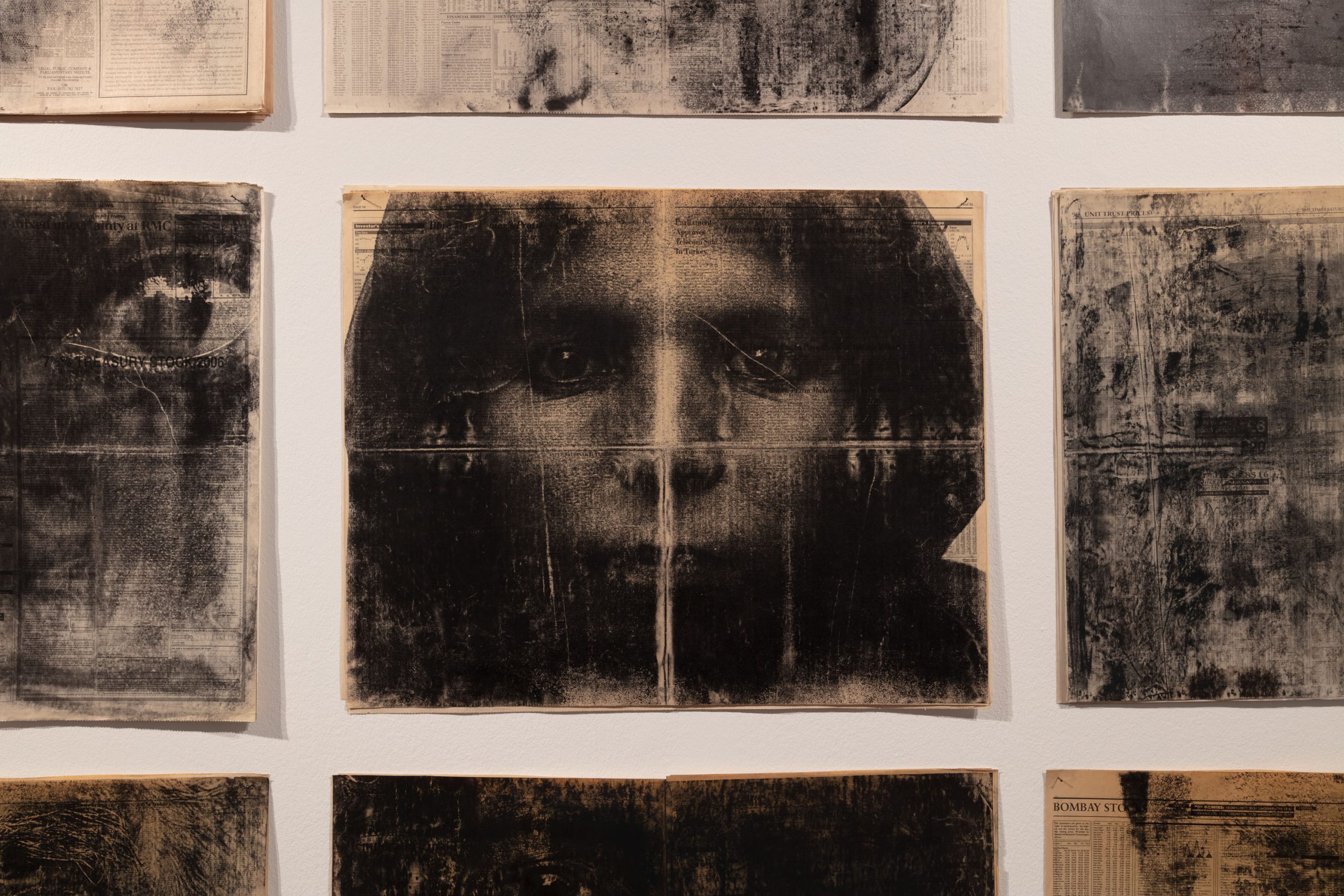How should art respond to the great evils of our time? When faced with moral and existential problems—of bombs and their profiteers, of poverty and its enablers, of greed immemorial—what is the role of the artist in a democratic society? Most importantly, is there a kind of visual language that goes beyond the realm of aesthetics and inspires dissent in the viewer? That art would surely serve a political purpose beyond just informing and reflecting. That would be art to change the world.
These ideas are explored in “Archive of Dissent,” an exhibition of Peter Kennard’s work currently on display at London’s Whitechapel Gallery. The exhibition’s location is appropriate. Whitechapel was once a library that, in Kennard’s words, was “a sanctuary from poverty” and “a place to develop radical and dissident ideas about art, literature and politics.” The show’s most recent installation, entitled The People’s University of the East End (2024), is named after the former library space, harkening back to the building’s original role as a hub for resilience, empowerment and activism.
An activist mentality runs through the entire exhibition. Kennard’s career can be characterized as one long scream of anger or perhaps one long cry for resistance. Indeed, Kennard is not an artist focused on aesthetics for aesthetics’ sake. Kennard joins a long line of socially engaged artists whose work is entwined with their political projects. (Kennard currently serves as Emeritus Professor of Political Art at the Royal College of Art.) His political stances define the classic works on show—anti-nukes, anti-apartheid, anti-racism, anti-Thatcher—which join newer pieces on Gaza and Ukraine.

As if the works weren’t obvious enough, Kennard makes his political aims clear in writing. “My art erupts from outrage at the fact that the search for financial profit rules every nook and cranny of our society,” he says. “Profit masks poverty, racism, war, climate catastrophe and on and on … My aim is to unmask the connection.” That aim is on full display throughout the exhibition. Kennard’s is not a subtle art; there’s no mistaking their targets. Such overtness sometimes detracts from the artwork’s power, but should art that deals with nuclear holocaust and the exploitation of millions strive for subtlety?

There is a range of techniques in “Archive of Dissent,” from photomontage to more recent pieces that use light, glass and projection to create a kinetic final image. Some installations inspire introspection more than others. A particularly powerful project, World Markets (1997-2024), shows charcoal portraits of forgotten faces over the numerical minutiae of the Financial Times’ market pages. But it’s photomontage that Kennard is best known for, having made his name with works published in The Guardian and The New Statesman. Kennard uses the technique of cutting parts of photographs and combining them to make a new image in order to indict and condemn the perpetrators of injustice, be they Prime Ministers, presidents, weapon manufacturers, BAE systems or financial institutions. Kennard’s anger radiates from each print.
SEE ALSO: One Fine Show – ‘Picturing the Border’ at the Cleveland Museum of Art
Photomontage was pioneered in the 1930s by John Heartfelt, who used the technique to mock and criticize the Nazis. The destruction and reconstruction of visual images thus became a political tool. Kennard was inspired by Heartfelt, as well as the Dadaist artist Hannah Höch and the writings of Brecht and Benjamin, who similarly sought to deconstruct traditional forms for political ends. These inspirations are important in that they situate Kennard’s work in a very twentieth-century tradition. Their works – Kennard’s included – are modernist and speak to a different aesthetic age. Do they still hold the same power now as they held when they first debuted? Not really. It’s a shame, as nuclear destruction, financial greed, weapon profiteering, extreme poverty, and insidious racism were not just twentieth-century concerns. They are the hard problems of today. We are in desperate need of political art. Kennard’s is perhaps an art for a different time; can we be stirred to action by photomontage in TikTok memes and images of decapitated Gazan children on X?
Activism and art go back decades, and there are decades on display in the three galleries in Whitechapel dedicated to Kennard’s career. As the works on Gaza and Ukraine show, Kennard’s political concerns are still very much rooted in the here and now. The art, however, frequently feels stuck in the past: it often felt more like an exhibition of historical documentation, a tribute to past activism and past technique. That’s perhaps not surprising for a retrospective of a five-decade-long career, but the contemporary pieces feel strangely out of sync with today’s politics. The sight of the Palestinian flag with blood dripping from its red triangle, for instance, struggles to move or enrage. A simple piece like this fails to comprehend the bloody atrocities we see on our phones every day.

As a historical show and a testament to one of Britain’s greatest and most important artists, “Archives of Dissent” is a success. As a call to action, less so. Still, we need art and curatorial spaces dedicated to expressing dissent now more than ever. We need art that empowers its viewers. Looking around the displays, which in many ways feels like looking around the second half of the twentieth century, it’s impossible not to think of Kennard’s students at the Royal College of Art. Who are the next generation of change-makers, the artists who create not to get on gallery walls but to inspire solidarity and protest? If Kennard’s legacy is to enable the next generation as we continue our foray into the chaotic twenty-first century, his would be a noble legacy indeed.
“Peter Kennard: Archive of Dissent” is on view at Whitechapel Gallery in London through January 19, 2025.
